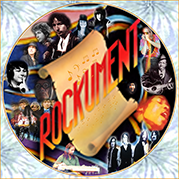Q&A with the Author of The Experiment
By Tony Bove
*
* iBook edition includes popups with links to songs in iTunes/Apple Music.
| Kindle edition | Print edition |
The following is a compilation of questions I received at the release of my first novel, The Experiment.
- What’s The Experiment about?
- Why did you include the music footnotes with links?
- How much is fact, and how much is fiction?
- Who is Cornell Woodrow? Is he based on a real person?
- Who are Johnny B, Reggie, and Gilbert?
- Who is Herbert Mention?
- What is the experiment?
- What does “see no evil” mean?
- What is the musician’s responsibility?
- Suggested reading
What’s The Experiment about?
The novel is about the power of music, and about the awesome responsibility of musicians to create music that symbolizes our way of life.
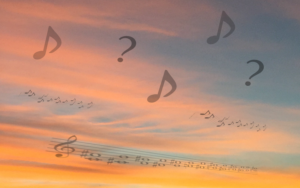
The Prologue is an introduction to the power of music in West African culture of the early 19th century. The short story hints at ancient secrets about the power of music, such as the ability to change a person’s mind, to trick an adversary, or to convince a person to love someone. It tells the myth of the mighty serpent that will quake the Earth, and how, after seven generations of servitude and ignorance, the enslaved people of West Africa will awaken and prevent this catastrophe with song and dance.
The novel then tells the story of three young men growing up in the Sixties who are inspired by what they discover in this story — about the roots of rock ’n’ roll, the power within the blues, the African spirits, High John the Conqueror, mojo, and the true meaning of the rolling stone. The murder of a popular radio personality, and the appearance of the mysterious blues shaman named Cornell Woodrow, galvanizes them into a rebellion that pits father against son and unites them in a quest for answers. They become part of an alchemical experiment to fuse different forms of music into Sixties rock that would integrate America and liberate the young.
They are opposed by and ultimately undermined by the Corporation, which fought the boogie-woogie craze in the Forties, contracted mind control experiments for the CIA in the Fifties, and subverted the student radical groups in the Sixties. The Corporation is conducting a counter-experiment to stop the spread of music and enlightenment, or to somehow control it, through espionage, subterfuge, and murder.
Why did you include the music footnotes with links?
When I read books that refer to music, I always want to play the music in order to understand the context. Music is an essential part of this novel, adding another dimension of irony and commentary. With streaming music, you can tap a link and hear the music while reading. The iBook version has popups for tapping music in the Apple Music library. The book’s site offers iTunes and free Spotify playlists. The book starts off with the very first song ever written, from ancient Sumer, performed by a historian-musician.
How much is fact, and how much is fiction?
Most of the characters are real, with fictional characters mixed in. The thoughts and words of real characters are derived from press quotes, memoirs, biographies, and histories.
Real historical events provide the milestones. The capture of the fort in Africa, the murder of Robert Johnson, John Hammond’s Spirituals to Swing concert, the Peekskill Riot of 1949, Ricky Nelson on the Atlantic City Boardwalk, the Beatles and Rolling Stones events, Bob Dylan at the Buddy Holly concert, the CIA experiments with LSD, Mary Pinchot Meyer’s murder, Dylan and the Beatles smoking pot, Monterey Pop, Diggers disrupting the SDS meeting, the March on the Pentagon, the Chicago demonstration, Brian Jones’ murder, Woodstock, Altamont, and the Weatherman townhouse bombing — were all real events.
Some events are rumored to have happened, such as JFK trying LSD, “Captain” Al Hubbard’s stash in Death Valley, Charles Manson’s indoctrination to be an assassin, the chauffeur’s role in the death of Brian Jones, the FBI and CIA plants within the radical movement, and of course, the Corporation’s meddling in everything.
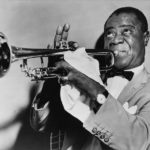 Fact and fiction are mixed through the historical sections on the shaman’s experiments in 20th century music. Cornell Woodrow is a shadow in the lives of Louis Armstrong, Jelly Roll Morton, Robert Johnson, John Hammond, Count Basie, Woody Guthrie, Pete Seeger, Sam Phillips, Elvis Presley, Brian Jones, Bob Dylan, and John Lennon. I read countless stories about Robert Johnson, but much of the voodoo in the blues, and Johnson’s interest in it, came from Julio Finn’s The Bluesman: The Musical Heritage of Black Men and Women in the Americas
Fact and fiction are mixed through the historical sections on the shaman’s experiments in 20th century music. Cornell Woodrow is a shadow in the lives of Louis Armstrong, Jelly Roll Morton, Robert Johnson, John Hammond, Count Basie, Woody Guthrie, Pete Seeger, Sam Phillips, Elvis Presley, Brian Jones, Bob Dylan, and John Lennon. I read countless stories about Robert Johnson, but much of the voodoo in the blues, and Johnson’s interest in it, came from Julio Finn’s The Bluesman: The Musical Heritage of Black Men and Women in the Americas. Many of the stories about High John the Conqueror came from Zora Neale Hurston and Virginia Hamilton. John Konny was real person, an infamous slave trader on the west coast of Africa. Marie Laveau was a real voodoo queen in New Orleans, and Mama Roux came from a Dr. John song.
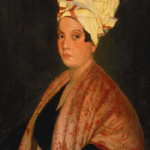
Who is Cornell Woodrow? Is he based on a real person?
His full name is Cornell “Stackalee” Woodrow (or “Stagger Lee”). There are historical records of a real person that the songs “Stagger Lee” and “Stackalee” inspired. Did he really run with Jesse James, have a magical Stetson, or take hell away from the devil when he died, as has been suggested? This idea of a swaggering, uncompromising, and hell-raising Stagger Lee as a theme for rock was inspired by Mystery Train by Greil Marcus.
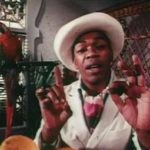 The Cornell character was inspired by Ishmael Reed’s Mumbo Jumbo
The Cornell character was inspired by Ishmael Reed’s Mumbo Jumbo. I visualize Cornell as a cross between Jiminy Cricket and the actor in the 7-Up commercials for the “un-cola” nut. His ancestor, Heijande, is the Dark Prince of Africa known as High John the Conqueror. Descendants of High John were freedom fighters and culture warriors, including Harvard “Doctor” John, Yale “Mojo” George, and Princeton “Pitchfork” John-Quincy who fought alongside Nat Turner.
Cornell Woodrow’s experiment, with Herbert Mention, is to raise the blues to a popular art form and fuse it with jazz rhythms to make a new kind of music that would raise the African spirits in America and be embraced by people of all colors.
Who are Johnny B, Reggie, and Gilbert?
The Italian-American Johnny B has the looks, personality, and confidence of one of my best friends from high-school, but represents the free spirit of rock ’n’ roll, as in Johnny B. Goode. He has perfect pitch and near-perfect memory of a song after hearing it only once. As he becomes the guru of the bass guitar for the new music, he discovers who his real mother is, and why he is so viscerally connected to the blues.
Reggie and Gilbert Mention are brothers in white suburbia who acquire powers from a blues shaman, and discover their missing father’s clues about the power of music and the true purpose of the Corporation. Reggie has a form of ESP and can sense the future. Gilbert, whose luck never runs out, can stir feedback in an amplifier and tickle unsuspecting women with vibrations. As they form a band with Johnny B, they become the archetypes of two sides of the Sixties youth rebellion — radical politics and the hippie/Digger lifestyle.
Who is Herbert Mention?
The missing father, Herbert Mention, is an exasperating character that epitomizes the random factor in history, the cog in the wheel of the machine, the whistle-blower who disappears before the trial, the informant who works both sides of the intelligence game. He is one of the strange bedfellows — code breakers, mystics, leftists, folklorists, nuclear physicists, and scientists — who were gathered into the American intelligence community during WWII to experiment with mind control.
He was born Herbert Mesh (nee Mesirow, related to Mezz Mesirow the jazz sax player and marijuana aficionado). His father was Gilbert Mesirow, an unknown socialist hero hauled off and killed for organizing a Negro revolt in the Deep South. Mesh met Cornell Woodrow while conducting mysterious research as a musicologist and folklorist, and joined the U.S. intelligence community as a code-breaker in WWII. He went AWOL when he saw the experiments they were conducting, changed his name to Mention, and began an underground campaign to release information while helping Cornell with his experiment.
What is the experiment?
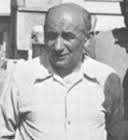
One is real: Armand Barbault, a noted alchemist, curated a mixture of liquid gold in the early Sixties in an experiment he started in 1948. This experiment was just one of many by the Corporation to control the mind, induce enlightenment through synthetic means, and bag the profits.
The other experiment is Cornell’s quest to form an integrated counterculture to the prevalent culture of anxiety and despair. He tries to raise the African spirits in popular music — in particular, Legba, guardian of crossroads and entrances, and Erzulie, goddess of love. He draws on the magical powers to heal, instill love, and empower adepts, which are hidden in the music of aboriginal cultures.

Aspects of the counterculture experiment developed long before the term was coined. Greil Marcus in his Lipstick Traces: A Secret History of the Twentieth Century provides the history of the Brethren of the Free Spirit, the original Johnny Rotten (John Leidon, the Rotten John of Münster in the 16th century), and the Dada movement.
The decade of the Sixties is a crucible for many experiments — from drugs and mind expansion to liberation movements and radical politics. At the flash point at the end of the decade, the experiments co-opt each other’s worst tendencies to foment revolution, which ultimately dissolves in violence. One might say that the Corporation’s experiment wins, but the struggle continues.
What does “see no evil” mean?
The theme of the novel is that musicians, like all true artists, have an awesome responsibility in this technological society to channel the vibrations of our lives and the world around us, and to sort out what is good and evil.
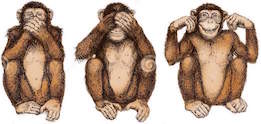
The phrase is “see no evil, hear no evil, speak no evil.” You know it as the the image of the three wise monkeys, originally from Japan: Mizaru, covering his eyes, sees no evil. Kikazaru, covering his ears, hears no evil. Iwazaru, covering his mouth, speaks no evil. The phrase is often used to refer to those who deal with impropriety by looking the other way, refusing to acknowledge it, or feigning ignorance.
But its true meaning is the opposite. When we see evil, we digest it, and when we digest it the evil becomes part of us. Seeing violence causes us to act more violently. Music has been getting more violent for decades, much of it gratuitous, in terms of lyrics, album covers, videos and associated artwork. When we hear evil, it becomes part of us. Our body absorbs it like a sponge.
Speaking no evil is the outcome of not seeing or hearing it. If you see or hear no evil, you will then speak no evil. It comes from Confucius: “Look not at what is contrary to propriety; listen not to what is contrary to propriety; speak not what is contrary to propriety; make no movement which is contrary to propriety.” It expresses the main idea of the ancient Zoroastrianism religion: good thoughts, good words, and good deeds.
What is the musician’s responsibility?
Risk is what separates the artist from the artisan. Being a musician is not a career, it is an intense vocation. The musician, the writer, and the artist are compelled by some inner spirit to make art, especially art that is so far ahead of its time that it starts out as a commercial failure.
The arts have always led the sciences. Jules Verne put a man on the moon a hundred years before NASA. Picasso’s cubist paintings helped Einstein visualize his theory of relativity. In 1942, the composer George Antheil and the actress Hedy Lamarr suggested using the melody of a song as a way of sending signals in Morse code. The concept spawned hundreds of patents and is the basis of many of secure communications systems.
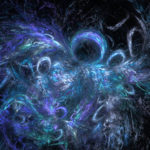 Physicists say that the particles we are able to see are like the transcribed notes of strings vibrating beneath them. If string theory is correct, then music is not only the way our brains work, as the neuroscientists have shown, but it is also what we are made of, what everything is made of. The entire universe vibrates, and we interpret vibrations as music. Knowledge of the musica universalis has run over the centuries like a golden thread through the teachings of prophets, seers, sages and saviors.
Physicists say that the particles we are able to see are like the transcribed notes of strings vibrating beneath them. If string theory is correct, then music is not only the way our brains work, as the neuroscientists have shown, but it is also what we are made of, what everything is made of. The entire universe vibrates, and we interpret vibrations as music. Knowledge of the musica universalis has run over the centuries like a golden thread through the teachings of prophets, seers, sages and saviors.
These are the stakes musicians are playing for. The artist’s awesome responsibility is to foresee the future and interpret it for the rest of us—to sort out what is good and evil.
Suggested reading
“The greatest part of a writer’s time is spent in reading, in order to write; a man will turn over half a library to make one book.” — Samuel Johnson
I was inspired by modern novelists. Thomas Pynchon, Don DeLillo, Ishmael Reed, Norman Mailer, Ken Kesey, Richard Farina, and Kurt Vonnegut are but a few. Read their books.
For music history and theory, there are thousands of books about music, and musician biographies, but the ones directly related to this novel are:
- Daniel J. Levitin: This Is Your Brain on Music
- Greil Marcus: Mystery Train
, The Old, Weird America
, Lipstick Traces: A Secret History of the Twentieth Century
, Bob Dylan
, Like a Rolling Stone: Bob Dylan at the Crossroads
- Julio Finn: The Bluesman: The Musical Heritage of Black Men and Women in the Americas
- Alan Lomax: The Land Where the Blues Began
- Zora Neale Hurston: Mules and Men
, Their Eyes Were Watching God
, Tell My Horse: Voodoo and Life in Haiti and Jamaica
- Peter Guralnick: Searching for Robert Johnson
, Feel Like Going Home: Portraits in Blues and Rock ‘n’ Roll
, Last Train to Memphis: The Rise of Elvis Presley
- Bob Dylan: Chronicles: Volume One
- Clinton Heylin: Bob Dylan: Bob Dylan: Behind the Shades Revisited
- Bill Wyman: Stone Alone: The Story of a Rock ‘n Roll Band
- Stanley Booth: The True Adventures of the Rolling Stones
- Keith Richards: Life
- Laura Jackson: Brian Jones
- Dave Van Ronk: The Mayor of MacDougal Street
- David Hajdu: Positively 4th Street: The Lives and Times of Joan Baez, Bob Dylan, Mimi Baez Fariña, and Richard Fariña
- Eric Von Schmidt and Jim Rooney: Baby, Let Me Follow You Down: The Illustrated Story of the Cambridge Folk Years
- Jacques Vassal: Electric Children
- Robert Cantrell: When We Were Good: The Folk Revival
- Joe Boyd: White Bicycles: Making Music in the 1960s
- Sir George Martin: With a Little Help from My Friends: The Making of Sgt. Pepper
- Ray Coleman: Lennon
- Hunter Davies: The Beatles
- Mark Lewisohn: The Beatles Recording Sessions: The Official Abbey Road Studio Session Notes
- Richard DiLello: The Longest Cocktail Party: Paperback Book
For politics and the Sixties:
- David Farber: Chicago ’68
- Robert Hewson: Too Much: Art and Society in the Sixties, 1960-75
- Abe Peck: Uncovering the Sixties
- Todd Gitlin: The Sixties: Years of Hope, Days of Rage
- Theodore Roszak: The Making of a Counter Culture
- Timothy Leary: Flashbacks
- Mark Rudd: Underground: My Life with SDS and the Weathermen
- Martin A. Lee and Bruce Shlain: Acid Dreams: The Complete Social History of LSD: The CIA, the Sixties, and Beyond
For the “other” conspiracies and mysteries:
- Louis Pauwels and Jacques Bergier: The Morning of the Magicians: Secret Societies, Conspiracies, and Vanished Civilizations
- Ishmael Reed: Mumbo Jumbo
- Robert Anton Wilson: Cosmic Trigger I: Final Secret of the Illuminati
- John Keel: Our Haunted Planet
- James Churchward: The Lost Continent of Mu
- Colin Wilson: The Occult: The Ultimate Guide for Those Who Would Walk with the Gods
- Tobias Churton: Aleister Crowley: The Biography
- Aleister Crowley: Moonchild
